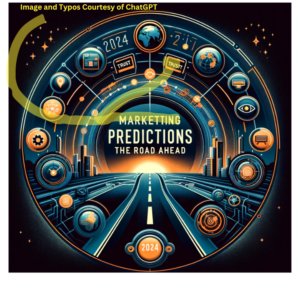In the creative world of sales and marketing, “process” often gets a bad rap. It can imply an over engineered, bureaucratic method that lacks inspiration.
Should you have a CMO or head of sales who is a process person? Or a strategic leader who guides and motivates the team? The latter is what’s usually required of leaders. But don’t you wish you had a nickel for every strategic visionary who doesn’t know how to execute (or hire strong executors)?
Well conceived processes can make the difference between mediocre results and spectacular results. They help create well oiled sales and marketing machines. There is no one “right” process that applies to every company. It is highly situational. But to illustrate, here are some new processes we put in place for a client whose business is a mix of e-commerce and enterprise sales. Revenue is up 54% YTD vs. last year.
Within the context of an overall go-to-market strategy, timely and topical mini-campaigns are created based on a marketing and sales calendar. These are sprints all around a specific theme. Each sprint follows a standard playbook, with measurement and continual improvement.
A Content-Driven Playbook….
- Sales representatives and customer service staff and are notified in advance and made aware of the campaign theme and the messaging.
- Products and services related to the theme are merchandised more heavily on the web site to kick off the sprint.
- A topical video is created and promoted through multiple channels. At least one sales representative provides feedback when the video is created.
- Multiple channels are used to drive web traffic with messaging that relates to the campaign and reinforces the overall brand. In advance, the team thinks through how to re-engage the audience with re-marketing and CRM targeting.
- Past buyers and win-back candidates are sent a series of targeted emails with content on the same theme, along with new prospects who are treated somewhat differently based on our segmentation.
- Sales representatives send personalized and slightly different versions of the email to their VIP customers, including a link to the latest video.
- The outside telesales team uses the timely topic to create a sense of urgency with prospects and then segways into the main pitch.
- Customers who purchase on this topic are flagged as such in the database, so we know their interests and what drives their responses.
- Customers who buy through e-commerce are contacted and targeted with up-sells and higher-end services by sales representatives.
Rinse and repeat. Unless a better process is developed, since processes can and should improve over time. We have built other processes to improve quantitative rigor and get feedback directly from customers.
The things above may or may not apply to your business. But the point is, when well done, the pieces of the process build on each other. Processes like this have important benefits:
- Each player on the team knows their roles and what’s expected.
- When done cross functionally, they create team wins and foster a team culture.
- They provide valuable data to improve over time
Best of all, they allow an organization to have a repeatable and scalable playbook —and that’s the hallmark of well oiled sales and marketing machines. The trick is to stay fresh and encourage innovation in ways that reinforce the overall strategy.
So the next time you’re in the board room, consider this: “process” shouldn’t be a dirty word.







